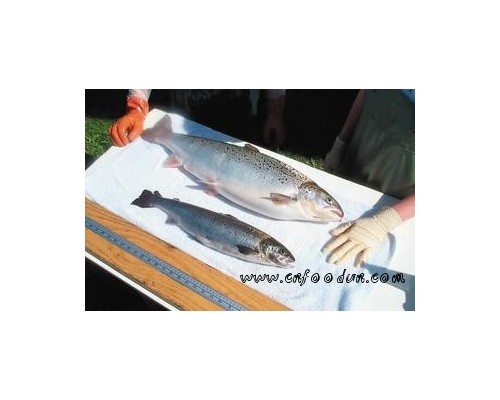食品伙伴网导读:美国FDA网站于7月28日 发布消息称:该机构新启用的电子门户可快速识别人类食物、动物饲料和宠物食品工业众潜在健康危害。并且在启用的7个月内,已递交了多于100起食品安全报告。由美国国会授权,申报食品注册处(注册处)是一种新的制度,要求制造商、加工商、包装商和经销商立即报告食物和动物饲料以及宠物食品的食品安全问题,而这些问题则有可能导致严重健康后果。
“美国食品药物管理局的新的报告制度已经证明了自己的重要性,它可以帮助市民避免接触受污染的食物。”美国FDA食品署副署长迈克尔河泰勒说。
一份报告总结了该处的前7个月的运行(2009年9月---2010年3月),它记录的125个初级报告 - 有关与食品或动物饲料(包括食品原料)的安全 - 和1638个后续报告。这些报告帮助美国FDA和食品行业在供应链中找到有害食品,防止它们流入消费者。
根据2007年法例创建注册处,但该法不适用于婴幼儿配方奶粉或食物补充剂,它们是被另一个强制报告制度所管辖。而医疗产品和药品、以及农业部所管辖的产品也不在此列。
编者注:根据我国著作权法第二章第二节 第十二条 改编、翻译、注释、整理已有作品而产生的作品,其著作权由改编、翻译、注释、整理人享有。本文的中文内容由食品伙伴网翻译整理,如需转载请将此段文字一起转载,并标明原始出处为食品伙伴网,否则我们将依法追究其法律责任。
原文报道:
New Early Detection System Helps FDA Identify More than 100 Food Safety Problems in First 7 Months
Electronic portal speeds identification and investigation of potential health hazards in human food, animal feed, pet food industries
More than 100 food safety reports were submitted by industry to the U.S. Food and Drug Administration’s new electronic portal in its first months of operation, the agency said today.
Mandated by Congress, the Reportable Food Registry (the Registry) is a new system that requires manufacturers, processors, packers and distributors to immediately report to the government safety problems with food and animal feed, including pet food, that are likely to result in serious health consequences.
“The FDA’s new reporting system has already proven itself an invaluable tool to help prevent contaminated food from reaching the public,” said FDA Deputy Commissioner for Foods Michael R. Taylor.
A report summarizing the Registry’s first seven months of operation (September 2009 -March 2010) finds that it logged 125 primary reports – initial reports about a safety concern with a food or animal feed (including food ingredients) – and 1,638 subsequent reports from suppliers or recipients of a food or feed for which a primary report had been submitted, from both domestic and foreign sources. These reports help FDA and the food industry locate hazardous foods in the supply chain and prevent them from reaching consumers.
Two notable reports first identified through the Registry prompted the following:
A February 2010 recall of hydrolyzed vegetable protein (HVP), without any report of illness. More than 1,000 industry reports specifically for products containing HVP, resulted in the removal of 177 products from commerce.
A November 2009 recall of products containing sulfites but not labeled as such. More than 100 reports regarding the inadvertent use of an ingredient containing sulfites in two nationally distributed prepared side dishes that were not labeled as containing sulfites resulted in their removal without any reports of illness.
Among the 125 primary reports, Salmonella accounted for 37 percent of hazards, undeclared allergens or intolerances accounted for 35 percent, and Listeria monocytogenes accounted for 13 percent. Among the 11 different commodity categories involved were: 14 animal feed or pet food, 12 seafood, 11 spices and seasonings, and 10 dairy products. Because the Registry has been operational for only a short period, it is too early to draw inferences concerning patterns of food and feed adulteration.
“Industry is increasingly detecting contamination incidents through its own testing, and FDA access to this information permits us to better target our inspection resources and verify that appropriate corrective measures have been taken,” Taylor said. “Ensuring that the American food supply is safe is a top priority of the FDA, and the Reportable Food Registry strengthens our ability to help prevent foodborne illness.”
Under legislation enacted in 2007 that created the Registry, industry must report foods or feeds that present a reasonable probability of serious adverse health consequences or death to humans or animals to the FDA within 24 hours. The law does not apply to infant formula or dietary supplements, which are covered by other mandatory reporting systems. The Registry does not receive reports about drugs or other medical products, reports about products under the exclusive jurisdiction of the U.S. Department of Agriculture, or reports from consumers.







